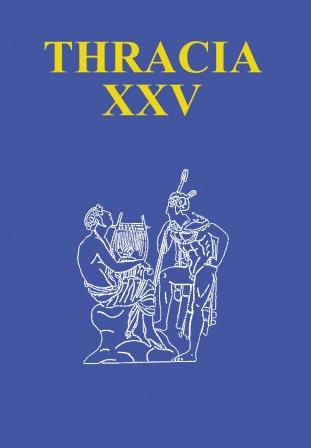IGBulg III, 1, 998 и културният синкретизъм в римския Филипопол
IGBulg III, 1, 998 and Religious Syncretism in Roman Philippopolis
Author(s): Lyuba RadulovaSubject(s): History, Language and Literature Studies, Cultural history, Theoretical Linguistics, Ethnohistory, Local History / Microhistory, Social history, Ancient World, Historical Linguistics
Published by: Институт за балканистика с Център по тракология - Българска академия на науките
Keywords: Philippopolis; local religious and cultural life; IGBulg III. 1. 998; grave imprecation; Apollo Kendrisos
Summary/Abstract: The paper examines a Greek inscription from Philippopolis (IGBulg III, 1, 998) which illustrates the complex dynamic in the local religious and cultural life. The inscription contains a grave imprecation reproducing models from Asia Minor. However, the practice of using supernatural protection against grave violations is quite uncommon for the Thracian context and is clearly related to the fact that the owner of the grave identifies himself as a native from Nicaea. The foreign element of the grave imprecation is mixed in the inscription with a reference to the city’s mail cult of Apollo Kendrisos, itself a result of the religious syncretism between the Greek Apollo and a local Thracian deity. The double protection of the grave entrusted both to the local gods and to the native supernatural forces is enhanced by adding a third protective element – a grave fine. Thus, the use of profane, legal means of protection, typical only for the Roman law, demonstrates the owner’s integration also into the dominant Roman culture.
Journal: Thracia
- Issue Year: 2020
- Issue No: 25
- Page Range: 225-239
- Page Count: 15
- Language: English, Greek, Ancient (to 1453), Bulgarian
- Content File-PDF

